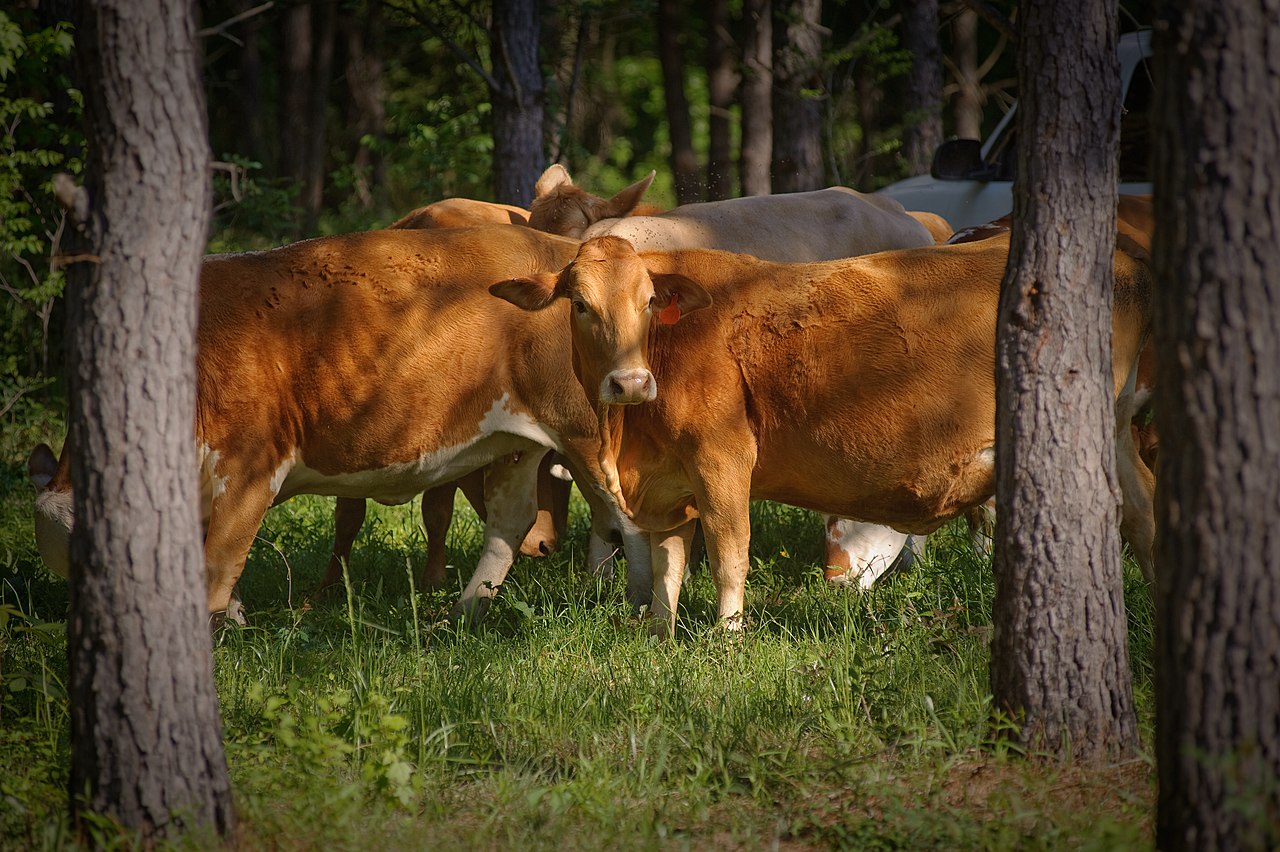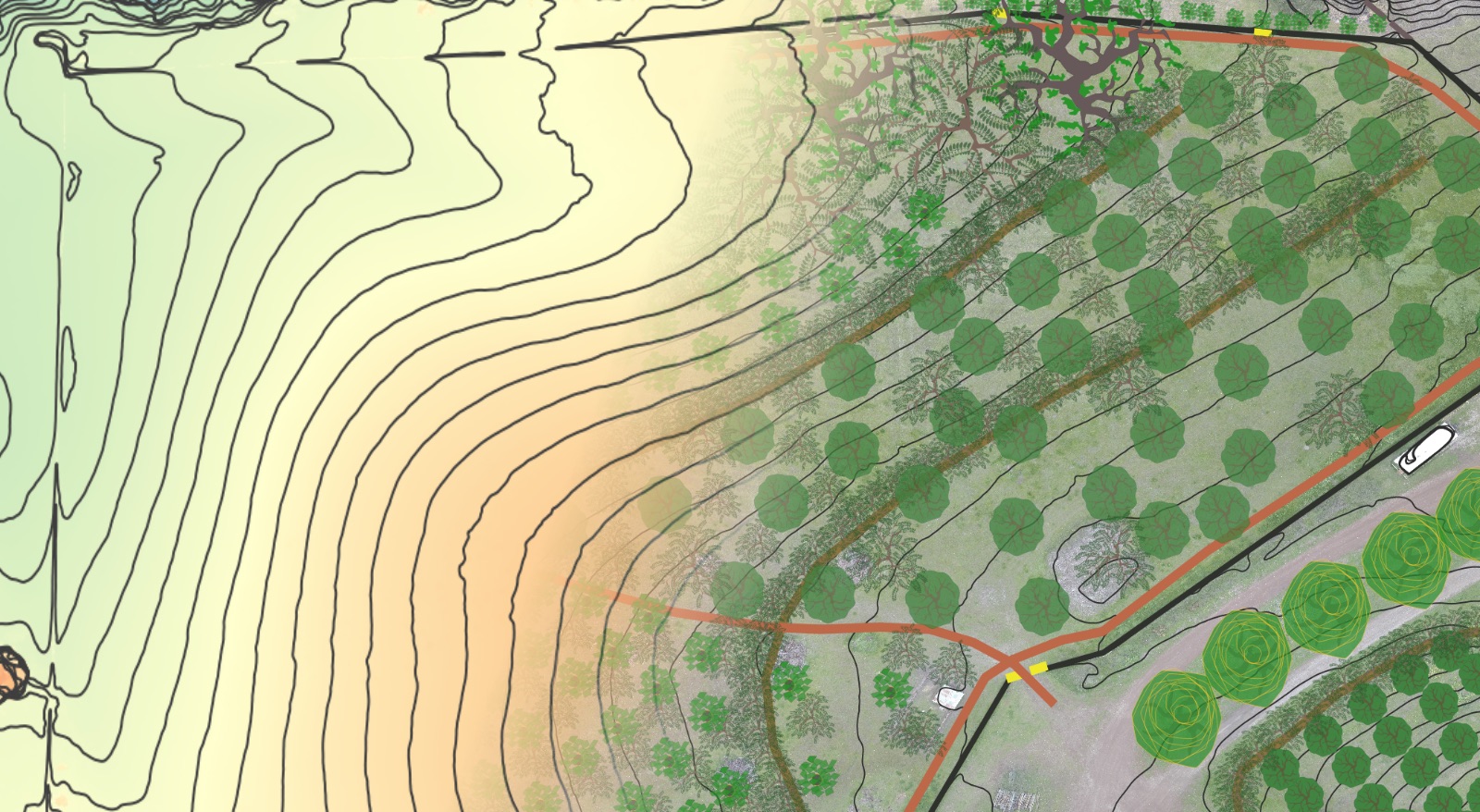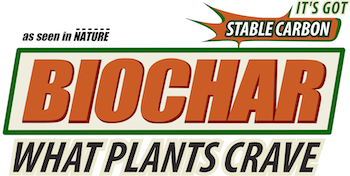Your cart is currently empty!
Silvopasture – Sustainable Food Systems For The Era Of Energy Descent
on

Silvopasture is one type of agroforestry system, which is a catch-all term for managing multi-species tree-based systems for the production of valuable products (food, fiber, fodder, fuels, timber, medicine and more), often in concert with livestock and annual or perennial crops. There are six main types of agroforestry practices, between which there can be considerable overlap (often multiple types of agroforestry are practiced side by side or layered on top of one another).
- Silvopasture – The intentional mixing of trees, animals and forage.
- Forest Farming – Cultivating non-timber crops under the canopy of an existing forest (mushrooms, shade-loving crops, certain livestock).
- Alley Cropping – Growing traditional field or row crops (hay, grain, vegetables) in between rows of trees.
- Windbreaks – Growing a multi-layered hedge of trees to mitigate the effects of wind.
- Riparian Buffers – Tree and/or woody shrub plantings along aquatic edges or wet areas.
- Forest Gardening – Growing a diverse set of edible and medicinal trees and plants in a way that mimics forest ecology and evolves into a forest composed of productive, high-yielding species.
The benefits created by agroforestry practices are both economic and environmental. Agroforestry increases farm profitability in several ways:
- the total output per unit area of tree / crop / livestock yields is greater than any single component cultivated alone,
- crops and livestock protected from the stressful effects of high wind, high sun, and freezing temperatures (trees will help with that too) are more productive (gain faster, breed back more reliably) and require fewer interventions, and
- obtaining multiple yields from the same system increases the product diversity and financial viability of the farming enterprise.
There are three key characteristics of an agroforestry system that distinguish it from other farming or forestry practices. They are:
- Intentional: Combinations of trees, crops and/or animals are intentionally designed and managed as a whole unit, rather than as individual elements which may occur in close proximity but are controlled separately.
- Intensive: Agroforestry systems are intensively managed to maintain their regenerative and protective functions, and can involve annual or seasonal operations such as cultivation, fertilization, planned burning, coppicing or pollarding, thinning and irrigation though are by no means required to.
- Integrated: The tree, crop and/or animal components are structurally and functionally combined into a single, integrated management unit to enhance the production of more than one harvestable component at a time. For example, livestock may be utilized to harvest vegetation from freshly coppiced polewood prior to them being gathered as small-diameter fuelwood. Such integration leverages more of the productive capacity of the landscape and animals while simultaneously reducing labor and input costs.



In this post, we look specifically at silvopasture as a means of creating truly sustainable food systems (i.e. ecologically regenerative and requiring minimal to zero inputs from centralized systems of production and supply) that can survive and thrive during the era of energy descent that we are living in.
For some context, the “era of energy descent” refers to the amount of net energy that we have available at the societal level to run our incredibly energy-intensive economy after the energy costs of extracting, processing, refining, transporting that energy source are taken into account. We are living in an era of declining net energy, and have been for about a decade, and there is no realistic way out of this predicament. Energy is only going to get more expensive, and by extension, so will just about everything else. This post assumes the trend of declining net energy will continue, and posits that mainstream agricultural practices of the present day are woefully misaligned the realities of a declining net energy future. For a much more in-depth look at our global energy predicament, see Chris Martenson’s Crash Course Chapter 7 – Energy video.
Additionally, governments the world over are more power-hungry than at any time in living memory it seems, and will continue pushing for more and more centralization (i.e. control) over our lives. By designing food systems in alignment with natural pattern, and reducing and ultimately eliminating our needs for expensive inputs supplied by centralized production and distribution systems, we can carve out more freedom and independence to live healthy and well despite their Orwellian tendencies.
“The tragic reality is that very few sustainable systems are designed or applied by those who hold power, and the reason for this is obvious and simple: to let people arrange their own food, energy and shelter is to lose economic and political control over them. We should cease to look to power structures, hierarchical systems, or governments to help us, and devise ways to help ourselves.”
~ Bill Mollison, Permaculture: A Designer’s Manual
Why Silvopastures Are The Foundation For A Sovereign Food System
1. More Yields From The Same Space
By growing trees in pastures (i.e. creating a savannah-esque ecosystem) the overall yield per unit area is increased. In the case of silvopasture, adding livestock fodder trees into pastures can dramatically increase the number of calories produced per acre that livestock can harvest and turn into valuable products (meat, milk, manure, fur, more animals etc). Additional yields, such as timber, fruit and nut crops can be layered over a pasture without substantially reducing feed quantity while also providing a host of benefits that come with giving livestock access to tree cover.

2. Better quality calories from the same Space – AKA Ice CReam For Cows
Grass grown within the area covered by the daily movement of the tree’s shadow can be of much higher quality, later into the growing season and into periods of drought, than grass that is grown fully exposed to the sun’s rays. Grass grown for portions of the day underneath dappled shade (like underneath a thornless honey locust), will have a lower lignin content, and therefore be more digestible to a ruminant and increase rate of gain.

3. Increased Species Diversity = Greater Product Diversity AND Ecosystem Resilience
Having more species present in a pasture, even if its just one type of tree, will greatly increased the diversity of products available to sell and dramatically improve ecosystem resilience. For example, having mulberry trees dotted throughout a pastured poultry silvopasture will;
- provide seasonal food for the poultry in the form of mulberry leaves (high in protein), fruit (mulberries falling from a tree will literally start a chicken riot – feeding the chicken might literally entail going out and shaking the tree!), and any insects that might reside on those leaves (like silkworms and other leaf-eaters),
- provide shade from intense summer sun (which will decrease stress, increase their rate of weight gain and/or help maintain egg production),
- provide windbreak protection – particularly from hot, drying winds that can kill poultry and other livestock,
- provide cover from aerial predators – especially if trees are maintained with low canopy edges, coppiced or weeping mulberry varietals are chosen,
- provide in-field roosts for chickens – a more diverse habitat to express their innate “chicken-ness”,
- produce additional marketable products in the form of fruit (fresh, dried or frozen, value-added into jams, jellies, juices, leathers etc.), cuttings (annual thinnings of mulberry trees can be rooted and sold as young trees), tree hay (early spring growth cut and cured for consumption later in the season), charcoal (made from coppice) and so many more…,
- enhance rainfall infiltration – deep, perennial root systems are the best way to enhance water infiltration and storage in the soil profile for use throughout the growing season,
- feed a diverse array of soil biology – root exudates from trees and pasture species together can support a much more diverse soil biology community = better water holding capacity and increased drought resistance, increased soil fertility
- and more…
4. Built In Manure Spreading
Manure from a ruminant’s rear end is the best fertilizer. However, as with any nutrient, when too much of it gets concentrated in one place, it becomes a pollutant, ultimately inhibiting healthy regrowth and depriving other areas of much needed nutrient. Evenly spaced trees within a pasture block are essentially evenly spaced umbrellas. When cows finish a feeding session and lie down to ruminate, where do they almost always prefer to be? Under a tree of course! And what happens when that cow stands up – you guessed it – she makes a fertilizer deposit! By having “shade umbrellas” spaced evenly throughout pasture blocks, even manure distribution (i.e. fertilization) is assured.

5. Decreased Animal Stress = Healthier Animals, Increased Rate Of Gain
Ruminants are prey animals. Even in domesticated livestock, this innate characteristic is present. When the animals are able to move into some form of cover (trees) they feel safer and less stressed. An environment with no cover is a stressful environment for a prey animal.
Livestock are also constantly adjusting their location in the environment (at least when they have the agency and option to do so) to maintain optimal body temperature. This goes both for seeking shade during periods of high-heat from intense sun, and in seeking tree cover during times of intense cold (the air mass underneath a solid tree canopy will be substantially warmer than in areas exposed to a clear night sky in cold climates due to the radiant heat from the earth being trapped by the tree canopy). See living barns for more information on these types of non-depreciating, living animal shelter systems. The USDA also has an old PDF handout available on the topic.

6. Nutritional Diversity FOr Livestock
Livestock have an innate intelligence to selectively graze and browse forages that offer them different minerlas and compounds depending on what their bodies are requiring at that time. By providing a diverse buffet of forages, all with different live cycles, root depths, and microbiological symbionts, the animals have free access to a much greater array of nutritional “supplements” than if they are confined to just eating pasture-based forage. Better nutrition means better animal health, faster gains and greater profitability for the livestock manager.



7. In-sourced soil fertility
Many of the trees that are valuable for producing food for livestock also happen to be nitrogen fixing trees. These trees have a symbiotic relationship with nitrogen-fixing bacteria that enable them to fix atmospheric nitrogen in the soil and make it available to the tree and other plants and soil biota for growth. Leaf fall from trees over pasture also provides a perfect annual top-dress fertilizer and will help to feed all manner of macrobiota in the upper layers of the soil (earthworms and other larger primary decomposers). Trees are fertility pumps – they mine deep into the subsoils, liberate stored minerals from rock with the help of fungal companions, and deliver those minerals to the soil surface in an endless cycle of life, death and renewal.
Silvopastures Large And Small
Silvopasture is an incredibly powerful method to reclaim food sovereignty from the high-energy, brittle, just-in-time network of global commodity supply and production chains. It is a way to in-source all of the external inputs that modern agriculture relies upon and create highly efficient nutrient cycles on the farm. No matter if your landscape is large or small, trees have a roll to play in raising healthy animals profitably in the era of energy descent.
“Animals are the messengers of the tree, and trees the gardens of animals. Life depends upon life. All forces, all elements, all life forms are the biomass of the tree.”
~ Bill Mollison, author of Permaculture: A Designer’s Manual




